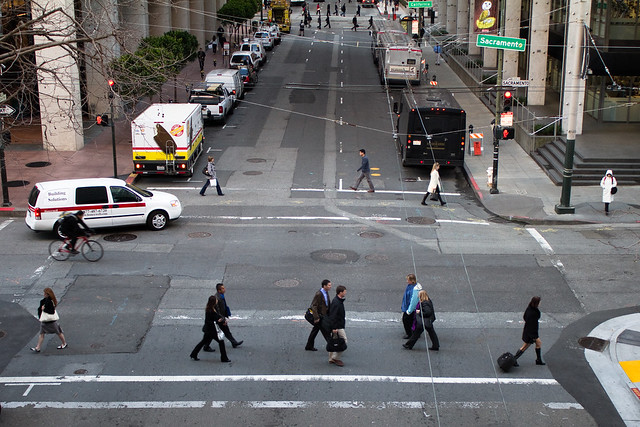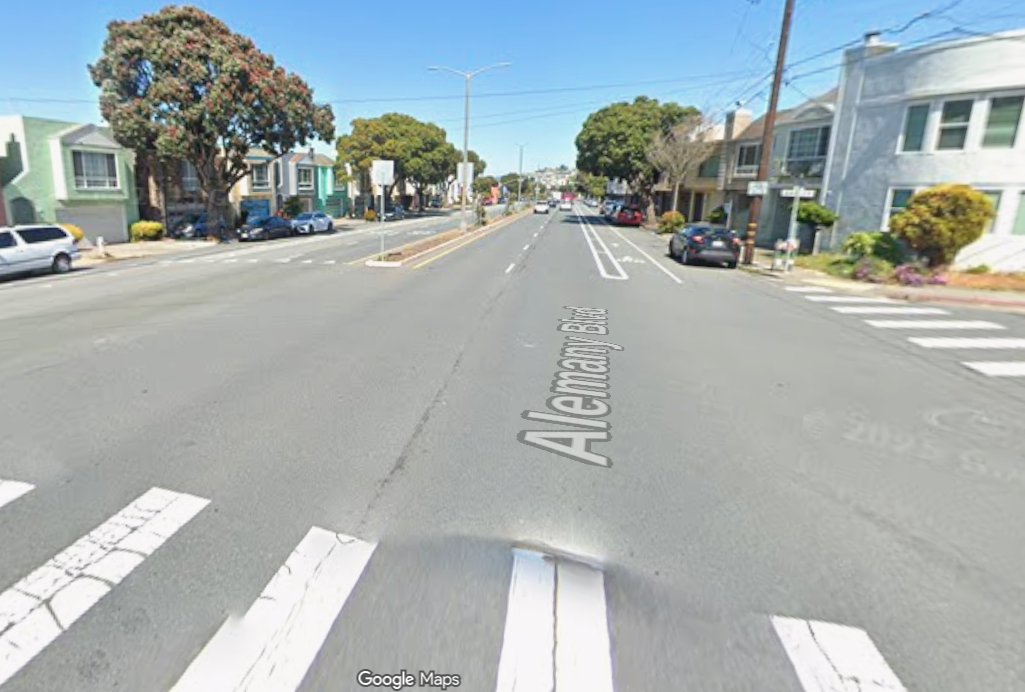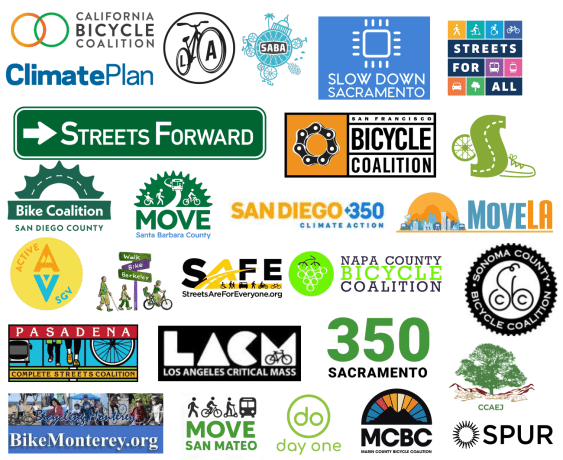More than a year after the mayor's Pedestrian Task Force began meeting to develop San Francisco's Pedestrian Action Plan, the SFMTA said the agency expects to finalize the document by late summer. Unclear, however, is whether the plan will include a measurable commitment to implementing physical pedestrian safety infrastructure.
To meet the targets set in former Mayor Gavin Newsom's Executive Directive on Pedestrian Safety -- a 25 percent reduction in injuries by 2016, and 50 percent by 2020 -- the document will lay out a blueprint for safety improvements on wide, high-speed streets known as "arterials," where pedestrians are most at risk of serious traffic injuries, SFMTA Senior Transportation Planner Frank Markowitz told the Pedestrian Safety Advisory Committee yesterday.
The plan would also set metrics to gauge the city's progress toward four goals: Reducing severe and fatal pedestrian injuries, reducing injury inequities between neighborhoods, increasing walking trips as a share of all trips, and providing "high-quality walking environments." The Task Force expects to begin conducting public outreach in May and to release a draft plan in mid-summer, said Markowitz.
"Most of the actions would be implemented in the next two, three years, funding permitting," he said.
The strategies in the plan will include physical traffic-calming measures as well as media campaigns, upgraded speeding enforcement technology (i.e. LIDAR guns), and more thorough data collection on injuries, said Markowitz. Other efforts already underway, he added, include 15 mph school zones -- 88 percent of which have been implemented as of last week, according to the SFMTA. The agency also continues daylighting street corners, installing pedestrian countdown signals, and more.
Physical street improvements, like corner sidewalk bulb-outs, improved crosswalks, and traffic-calming measures, said Markowitz, will be largely funded by incorporating pedestrian infrastructure into transit and bicycle projects, since dedicated revenues for pedestrian improvements are scarce. Funding would also depend on allocations from Prop B bonds, which include $50 million for pedestrian and bike projects.
Aside from the goals set by the mayor's directive, specific measuring sticks haven't been proposed yet, and there's no word that they'll include the type of commitments in New York City's plan, after which San Francisco's is partly modeled. The NYC Department of Transportation's Pedestrian Safety Study and Action Plan set out to re-engineer 60 miles of streets each year, including 20 miles of "intensive safety redesign."
Markowitz noted the need for concrete metrics to hold agencies accountable to the plan. "We need to increase the visibility of the commitments by all the agencies that are involved in this area -- the MTA, Public Health, Public Works, the Police Department, and so on," he said.
Walk SF Executive Director Elizabeth Stampe, who sits on the Task Force, said the organization is pushing for a commitment of fixing ten miles of streets per year, including three miles of major redesigns, as part of the plan.
"It's great to have complete streets. These improvements absolutely should be made in concert with others," said Stampe, who pointed out that calming motor vehicle traffic and improving pedestrian visibility make streets safer for all users. "But they shouldn't be the afterthought, and they shouldn't be the first thing to get cut out, and that's what we've seen a lot with street plans."
Still, Stampe said she hopes the action plan will push various agencies to better coordinate on street projects that often overlook "a tremendous opportunity to add a bulb-out and improve safety for crossing," which "frustrates a lot of people."
Perhaps the biggest accomplishment of the Task Force so far, she said, has just been getting the various agencies to communicate on pedestrian issues. "I think we've moved forward really well on that," she added.






